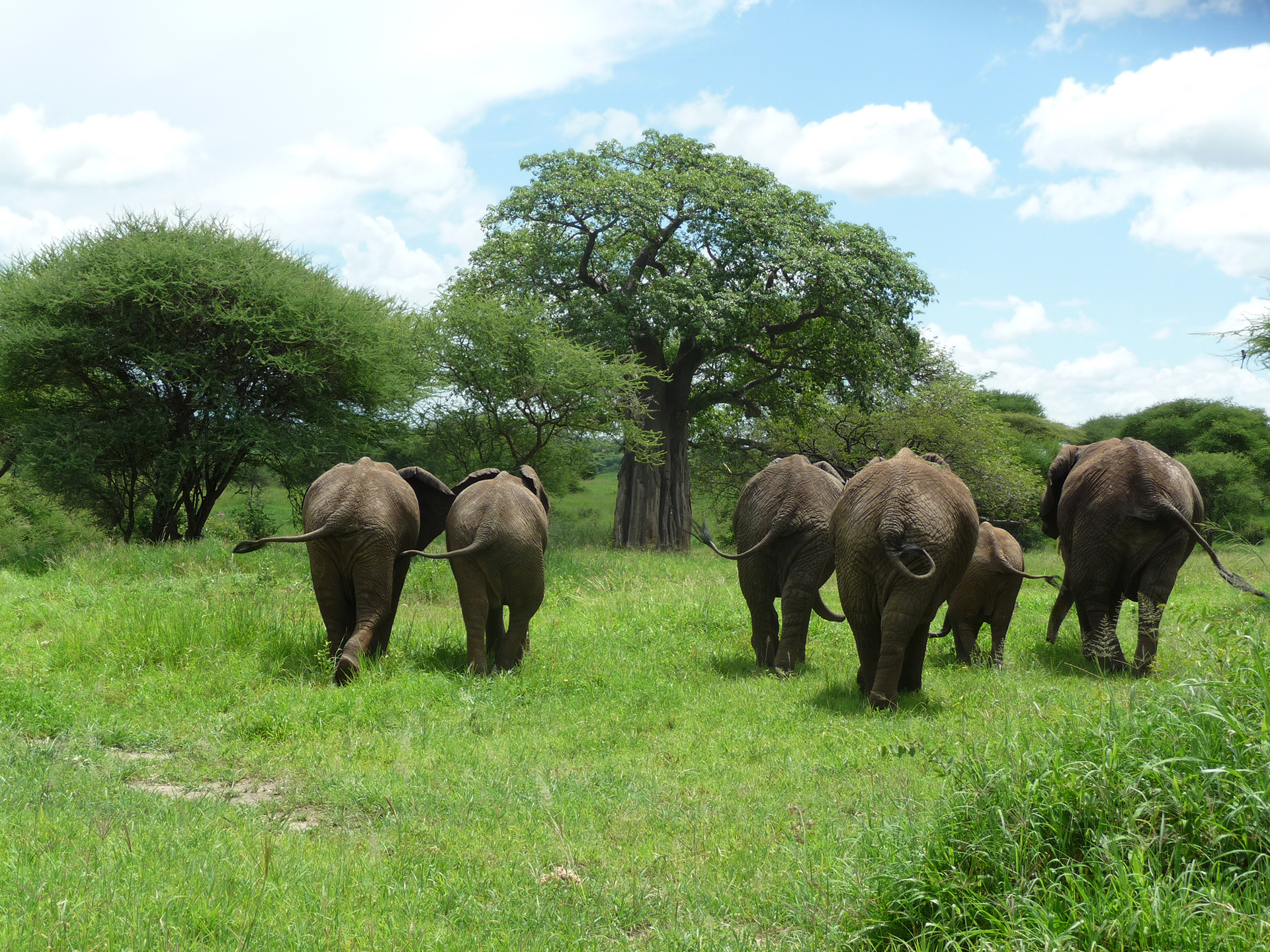Tarangire National Park
Tarangire National Park is another gem in northern Tanzania, known for its incredible wildlife and distinct landscapes. It’s often considered a bit of a hidden treasure compared to more famous parks like the Serengeti or Ngorongoro Crater, but it offers a unique experience that’s worth exploring.
Key Highlights of Tarangire National Park:
1. Location and Size
- Tarangire is located about 120 km (75 miles) southwest of Arusha, and is one of Tanzania’s largest national parks, covering 2,850 square kilometers (1,100 square miles).
- It’s situated in the northern safari circuit, nestled between the Serengeti and Ngorongoro Crater, so it’s an easy addition to any safari itinerary in the area.
2. Famous for its Elephant Herds
- Tarangire is often called the “Elephant Kingdom” because it has one of the highest concentrations of elephants in Africa. During the dry season (June to October), you can see herds of up to 300 elephants gathered around the park’s waterholes.
- The park’s elephants are famous for their impressive tusks, and they are an incredible sight to behold up close, especially during the dry season when they congregate around the few available water sources.
3. Diverse Wildlife
- Apart from elephants, the park is home to a wide variety of wildlife, including:
- Lions (often seen lounging on the park’s large baobab trees)
- Leopards and cheetahs
- Buffaloes, zebras, and giraffes
- Wildebeest, gazelles, and impalas
- Birdwatching: With over 550 species of birds, including greater and lesser flamingos, bustards, and vultures, it’s a fantastic destination for bird lovers.
4. Distinctive Landscape
- Tarangire is unique for its baobab trees, which dot the landscape and give the park a surreal and iconic look. These massive, ancient trees are sometimes called “upside-down trees” because of their unusual shape.
- The park is made up of a variety of habitats: from swamps and savannas to wooded hills. The Tarangire River, which runs through the park, is the main water source for wildlife, especially in the dry season.
5. Great for a Day Trip or Extended Stay
- While Tarangire is smaller than the Serengeti, it’s still rich in wildlife, and you can see a lot in a short amount of time. It’s often included in a Tanzania safari circuit alongside Ngorongoro Crater, Serengeti, and Lake Manyara.
- The park is known for its less crowded atmosphere compared to other parks, so you’ll often find it feels more serene and intimate.
6. Best Time to Visit
- Dry Season (June to October): This is the prime time for wildlife viewing because the animals concentrate around the limited water sources, making them easier to spot. The elephants, in particular, are very active at this time.
- Green Season (November to May): The wet season is less popular for safari tours due to the rains and thicker vegetation, but it offers a quieter experience and lush landscapes. This is also the calving season for many animals, so you may see baby animals being born.
7. Activities and Experiences
- Game Drives: The park offers excellent game viewing, particularly around the Tarangire River and waterholes.
- Walking Safaris: Some operators in the park offer walking safaris with a guide, providing a more personal and educational way to experience the park’s wildlife and ecosystems.
- Birdwatching: Tarangire is a birdwatcher’s paradise, especially during the wet season when migratory birds pass through.
8. Conservation
- Tarangire is part of the Greater Tarangire Ecosystem, which includes surrounding conservancies and community areas, helping to maintain a balance between wildlife conservation and local human populations.
- The park faces challenges like poaching and human-wildlife conflict, but the Tanzanian government and conservation groups are working to protect its biodiversity.
How to Get There
- Tarangire is accessible from Arusha, which is the main gateway for safaris in northern Tanzania. The park is about a two-hour drive from Arusha.
- You can also fly into Kilimanjaro Airport and take a short flight or drive to Tarangire.
If you’re looking for a safari that combines fantastic elephant sightings, unique landscapes, and a quieter, more intimate experience, Tarangire National Park is definitely a must-visit!

